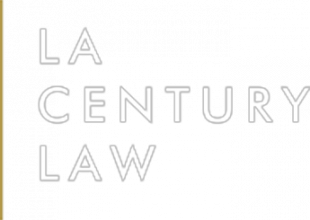
What Are Demand Letters in California Personal Injury Cases?
A demand letter is an important aspect of personal injury claims. Personal injury demand letters outline the extent of the injury and the damages incurred and also propose the compensation needed for the damages incurred.
If you are injured and need to make a personal injury claim, you need to write a winning demand letter to the at-fault party or the insurance company. To write an excellent personal injury demand letter, you should hire a personal injury attorney to help you draft the letter and follow up on the whole process.
This article explains everything you need to know about personal injury demand letters in the state of California.
What is a Demand Letter?
A demand letter can be defined as a formal request by the victim to the insurance company or at-fault party seeking compensation for the injuries sustained and the expenses incurred.
A demand letter is an attempt to settle informally instead of filing a lawsuit, and it can be submitted directly by the injured party or their attorney. Since it seeks compensation for injuries and damages sustained, a demand letter should be factual and truthful. A poorly written and exaggerated demand letter can hurt your chances of fair compensation.
For this reason, accident victims hire a skilled and experienced personal injury lawyer.
What Information Should be Included?
A personal injury demand letter should not necessarily be long, especially in small claims cases, but precise, factual, and truthful. A well-written demand letter sets forth a solid case and arguments on why the at-fault party is liable and why the injured party warrants compensation.
The following is the most crucial information that must be included in your personal injury demand letter:
- The time, date, and location of the accident.
- The name(s) and contact information of the at-fault party and their insurer.
- Details of the injuries the plaintiff sustained from the accident
- Summary of damages the injured party incurred, including medical bills, lost wages, and explanation of non-economic damages
- Other supporting documents like X-rays, MRIs, and other test results, photos, and or videos of accident scenes and injuries sustained.
This information must be documented and organized correctly in your demand letter to increase your chances of compensation by the at-fault party or an insurance company.
What Are Some Best Practices for Writing a Demand Letter?
The most crucial component of successfully resolving your injury claim is the submission of a well-written demand letter. We have compiled some best practices to help you draft and submit a winning demand letter to the at-fault party.
1. Review your medical records
Medical records are vital in settling personal injury claims since they establish your injuries. Medical records also explicitly explain the cause of your injuries, and this is important because the insurer or at-fault party may try to attribute your injuries to other events.
Most importantly, medical records establish an important link between the accident and the injuries. For your demand letter to be thorough, you will need to attach the medical records and emphasize what they explain. You need to have a general idea of what the records say about the extent of the injuries sustained.
2. Present your expenses
Before even drafting a demand letter, you need to know that you are not likely to be compensated for any undocumented expense. Therefore, it is imperative that you document and keep track of all expenses related to the injuries you have sustained.
For instance, you can document the amount of money you have incurred on gasoline as you honor a doctor’s appointment to treat your injuries. Documenting your expenses will make it easier for you to write an excellent demand letter.
3. Be organized
A well-organized and precisely written demand letter can guarantee you timely compensation from the at-fault party. You can group your expenses and damages into categories and make your demand letter look as professional as possible.
4. Do not exaggerate
You might be desperate to maximize your compensation, making you exaggerate your claim. However, such a move is counterproductive and will work against you during negotiations. Never try to appeal to the insurer’s or at-fault party’s sense of pity because you are not likely to influence them.
What is the Timeline for When You Should Receive a Demand Letter Response?
Ordinarily, after submitting a demand letter, it takes roughly two weeks to two months to receive a settlement check. This happens if the insurance company or the at-fault party agrees to your injury claims. Importantly, insurers are not allowed to unnecessarily delay the settlement process, but they often do so using strategies like:
- Settlement negotiations: An insurer might delay their replies if they feel you are owed less than you are claiming. They might send you a lower offer after some time, and since they believe you desperately need the compensation, you will agree to their proposal.
- Paperwork not filled out: The claim response and settlement process may be delayed by insurers by claiming that you failed to complete the necessary documentation,
- Planning for court: The insurers or at-fault party may delay their response if they are planning to take the issue to trial.
These aren’t the only reasons that necessitate a delay in response and settlement. Fortunately, if you don’t hear a response by a reasonable time, there is a recourse for the injured party as they can file a lawsuit and pursue compensation through the courts.
Need an Experienced Personal Injury Lawyer in California?
A demand letter is an important part of your personal injury claim, and it is best produced in the hands of a skilled and experienced personal injury attorney. If you or your loved ones are injured in California, contact LA Century Law for a consultation and legal advice. Speak to us today by phone or online.
FAQs About Demand Letters
What should I include in a personal injury demand letter?
You must include information about the date and location of the accidents, the name and contact information of the at-fault party, injuries sustained, and other supporting documents.
How long will it take to get a response from the insurance party, and what should I do when I don’t receive the response?
The response takes approximately two weeks to two months to be received. If you don’t receive a response, you have the legal recourse of filing a lawsuit.








 Available 24/7
Available 24/7